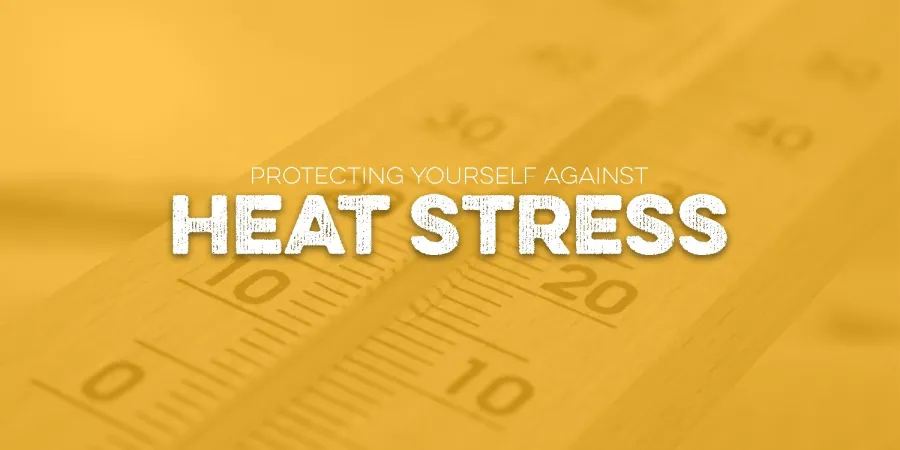Heat stress in the workplace

Heat kills. In 2021, 36 workers died from heat on the job. In the last decade alone, nearly 400 workers died from heat-related illness.
This safety and health problem is only getting worse. Heat stress is a common workplace hazard which can affect workers of all ages and occupations. During a time when record high temperatures are documented across the globe almost every month, it is imperative that workers have the resources, knowledge and tools to protect themselves against heat hazards and to understand the warning signs of heat illness.
Some jobs are at a higher risk of heat stress than others. Examples of occupations at a higher risk of heat illness are outlined in the lists below.
Outdoor workers
- Construction workers
- Emergency responders
- Hazardous waste site workers
- Agricultural workers
Indoor workers
- Steel mill workers
- Paper mill workers
- Refinery workers
- Boiler room operators
The Occupational Safety and Health Administration (OSHA) does not have standards to protect workers from high heat. Some states, including California, have regulations protecting workers in certain industries and/or sectors. Other states, including Texas, have made it illegal for specific cities to have regulations related to heat stress prevention, such as requiring water breaks for construction workers. In spite of this, there are steps that can be taken to protect against heat stress in the workplace.
The ideal core body temperature is between 96.8- and 100.4-degrees Fahrenheit. When body temperature is elevated above this level, there is a greater risk of heat-related illness. Different types of heat illness include heat stroke, heat exhaustion, heat cramps, heat rashes and heat fatigue. Risk factors for heat illness include occupation, age over 65, obesity, pregnancy, heart conditions, high blood pressure, certain medications and prior heat illness. Further, OSHA reports that nearly three out of four fatalities from heat illness occur during the first week of work. Therefore, workers who have not had ample time to acclimate to the heat are also at a greater risk of heat illness.
What employers should do:
Employers should take steps to protect workers from heat hazards. Ventilation, air treatment and air cooling should be provided. In addition, heat conduction blocking methods, such as insulating hot surfaces generating heat or changing the surfaces, may also be implemented.
Work practices may also help. These include scheduling work to properly acclimatize workers, scheduling more strenuous tasks in the cooler parts of the day, providing rest and water breaks, providing heat recovery areas, and instituting heat stress training.
Protective clothing can also help. Uniforms and work clothes should be light colored and breathable. Cooling vests, wetted clothing and water-cooled garments can also prevent heat illness.
Outside of these workplace measures that employers can implement, there are also many tools and resources available online. The OSHA-NIOSH Heat Safety Tool App has a real-time heat index, hourly forecasts and recommendations for planning outdoor work. OSHA also has an online heat stress calculator to determine if a worker’s heat stress is above recommended limits. Lastly, the TMC incorporates a module about heat stress in various training sessions which may be taught as a stand-alone module.
Watch out for each other:
If you notice a coworker is experiencing headache, nausea, weakness, dizziness, heavy sweating, hot/dry skin, elevated body temperature, and/or increased thirst, there are steps that can be taken to respond quickly to these signs of heat stress:
- Provide cool water to drink
- Remove unnecessary clothing
- Move to a cooler area
- Cool with water, ice or a fan
- Do not leave affected worker(s) alone
- Seek medical care if needed
If the worker is experiencing abnormal thinking or behavior, slurred speech, seizures and/or loss of consciousness, call 911 immediately.
KNOW YOUR RIGHTS! Heat stress is not a workplace issue that will likely be eliminated in the near future. This is why it’s crucial that workers know their rights and are adequately protected from heat hazards. The USW Health, Safety and Environment Department and Tony Mazzocchi Center are there as resources if should you have any questions.